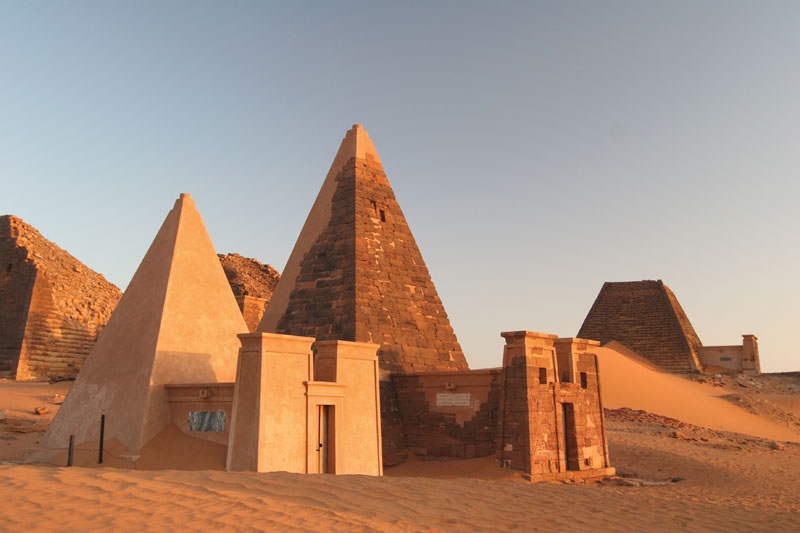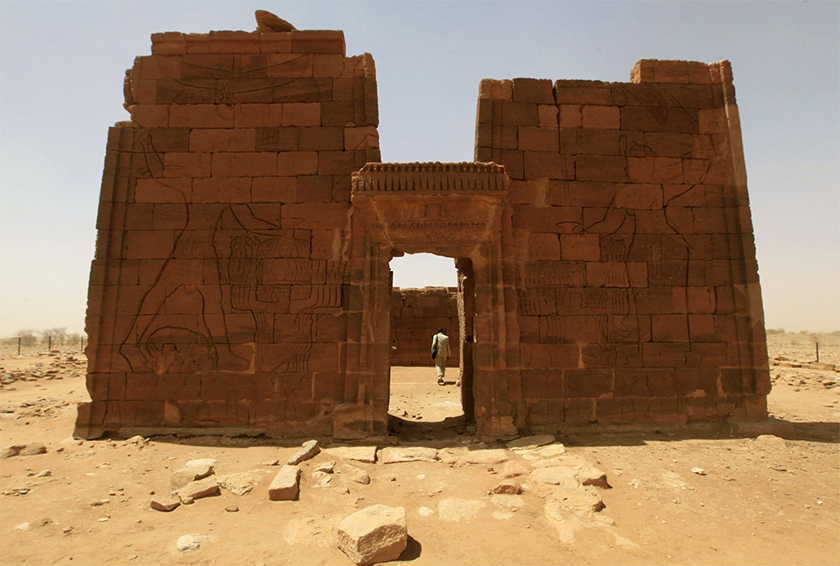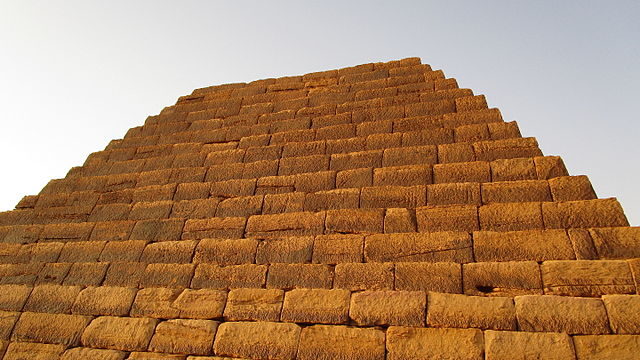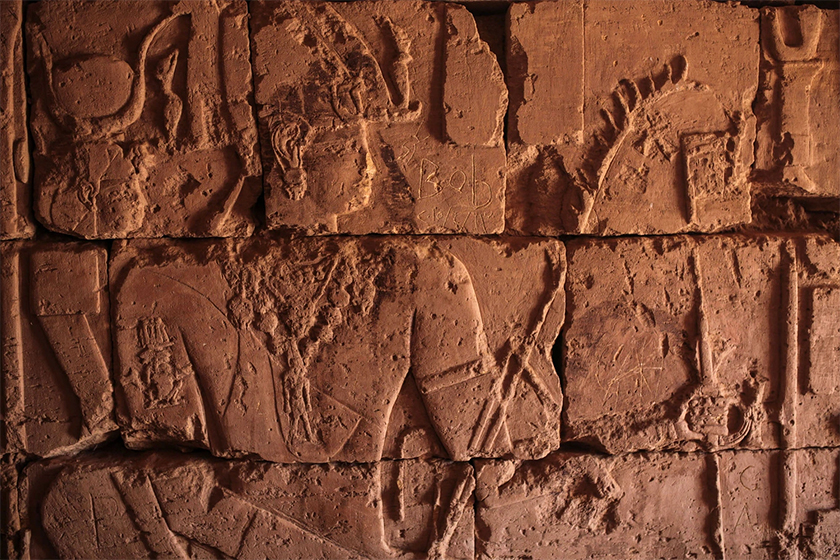
These pyramids were built very near to the Nile River.
Image courtesy of: Encyclopedia Britannica
Everyone is familiar with the pyramids of Egypt, probably the most famous pyramids in the world; however, those are not the only pyramids people should be familiar with. In Sudan, there is a set of incredibly impressive and ancient structures: the pyramids of Meroe.
Meroe was the capital of the Kingdom of Kush’s and was ruled by the Nubian kings. There are many comparisons between the two civilizations and, similar to the pyramids of ancient Egypt, these pyramids were built as tombs. The pyramids are as striking as they are numerous… they number about 200. Quite a sight!

“Lion Temple” in al-Musawwarat, located south of the ancient city of Meroë.
Image courtesy of: The Atlantic, photographed by: Mohamed Nureldin Abdallah
The Ethiopian or “25” Dynasty of ancient Egypt was believed to have established itself in Kush, specifically in Meroe, after 650 BC. Here, the dynasty fostered an Egypto-Cushite culture that existed for the next 1,000 years.
This became the southern administrative center for the Kingdom of Kush beginning about 750 BC. Meroe quickly became the kingdom’s capital and developed into a prosperous area. The center survivied a Roman invasion; however, this event lowered its status significantly. The demise of Meroe occurred after raids by tribes… nevertheless, the remains remain.

“The heartland of the Kingdom of Kush.”
Image courtesy of: So Much More To See
The pyramids remained mostly intact until the 1880s when the Italian explorer, Giussepe Ferlini, destroyed the pyramids’ tops in search of treasures. He followed the idea that this civilization closely aliened with the traditions of the ancient Egyptians; thus, he (correctly) presumed that the Kingdom of Kush would follow that same funeral rites and rituals.
Ferlini chose which pyramids to raid based upon a catalog by the archaeologist Frederic Cailiaud that categorized them according to their physical condition. His logic was that if a pyramid was better “intact,” the chance of finding a treasure within it was greater.

The pyramids of Meroe are much smaller than the Egyptian pyramids. Built from sandstone, they can range from 32 feet to 98 feet high. They are step-sided and built on a plinth; in addition, they have sharp angles and a narrow foundation.
Image courtesy of: Abandoned Spaces, photographed by: Jovan Smiljković
What’s most special about the Meroe pyramids is that they were built in the Nubian style, a combination of Egyptian cultural forms with African influences.
There is an obvious reason that so little is known about Meroe and the earlier Napatan civilization… script. The Meroitic script was derived from ancient Egyptian hieroglyphics and remains untranslatable. The archeologist Vincent Rondot was quoted as saying,”It is one of the last antique languages that we still don’t understand. We can read it. We have no problem pronouncing the letters. But we can’t understand it, apart from a few long words and the names of people.” Sadly, nothing points to the fact that this will be better understood in the future.
Meroe thrived from 300 BC to 300 AD and was the last of the three Kushite Kingdoms to flourish. It is important to note that excavations showed the city to have been prosperous with wide streets that most probably were filled with people from nearby locales, the city’s inhabitants, and visiting trade caravans.

Hieroglyphics from a room inside a historic Meroe pyramid, a sign of the vast influence the ancient Egyptian civilization impacted on Meroe.
Image courtesy of: The Atlantic, photographed by: Mosa’ab Elshamy
The pyramids of Meroe are marked, mainly, by their steep slopes and small bases… a marked difference from Egyptian pyramids. Nubia was frequently at war with Egypt and ruled its territories when it was weak. Vice versa, when Nubia’s military was shaky, it was ruled and governed by Egypt.
Many of the pyramids held the tombs of the kings and queens of the Meroitic Kingdom which ruled the area for more than 900 years. The decorative accents and elements on the inner walls of the pyramids often feature hieroglyphics from Pharaonic, Egyptian, Greek, and Roman cultures. The dead bodies were mummified and covered with jewelry before they were laid in wooded cases to forever rest. Among the many artifacts found during archaeological expeditions in the 19th and 20th century were pottery, wooden boxes, rings, metal vases, remains of bows and arrows, and colored glass. These items prove without doubt, that the Nubian civilization had trade connections with both Egypt and the Hellenistic world.
Who knew this… there are more pyramids in one small section of the northern Sudanese desert than in the entire country of Egypt?